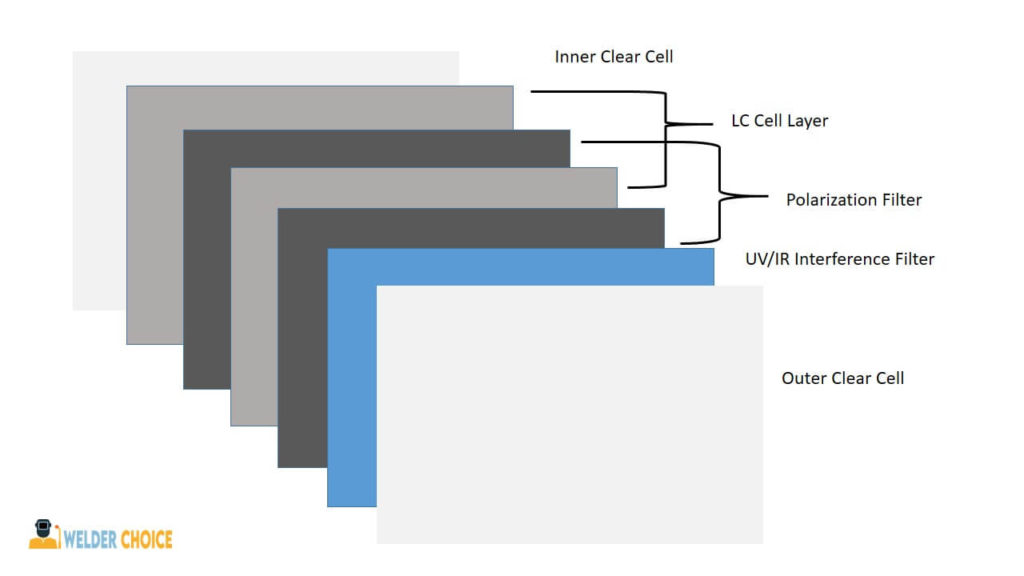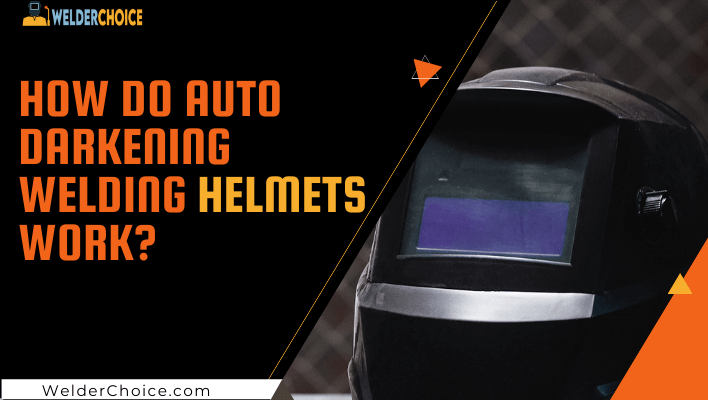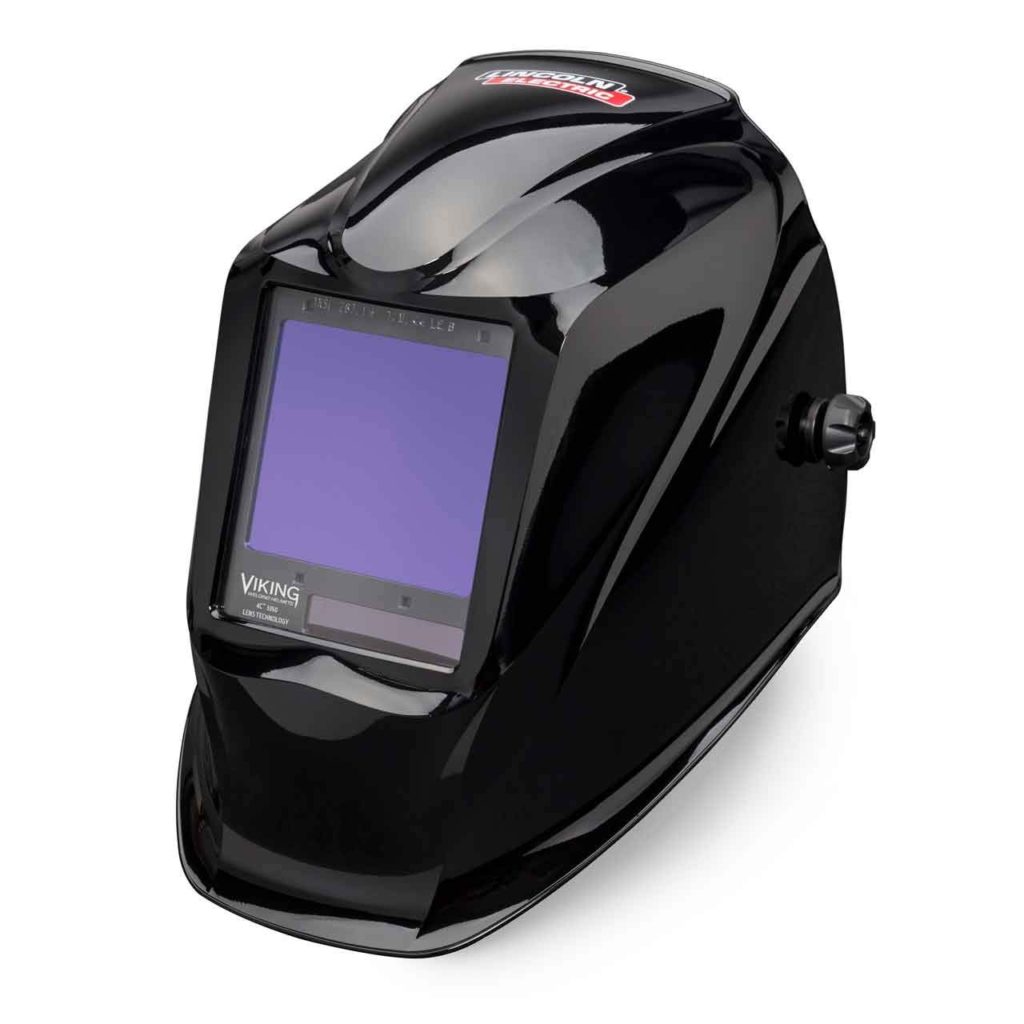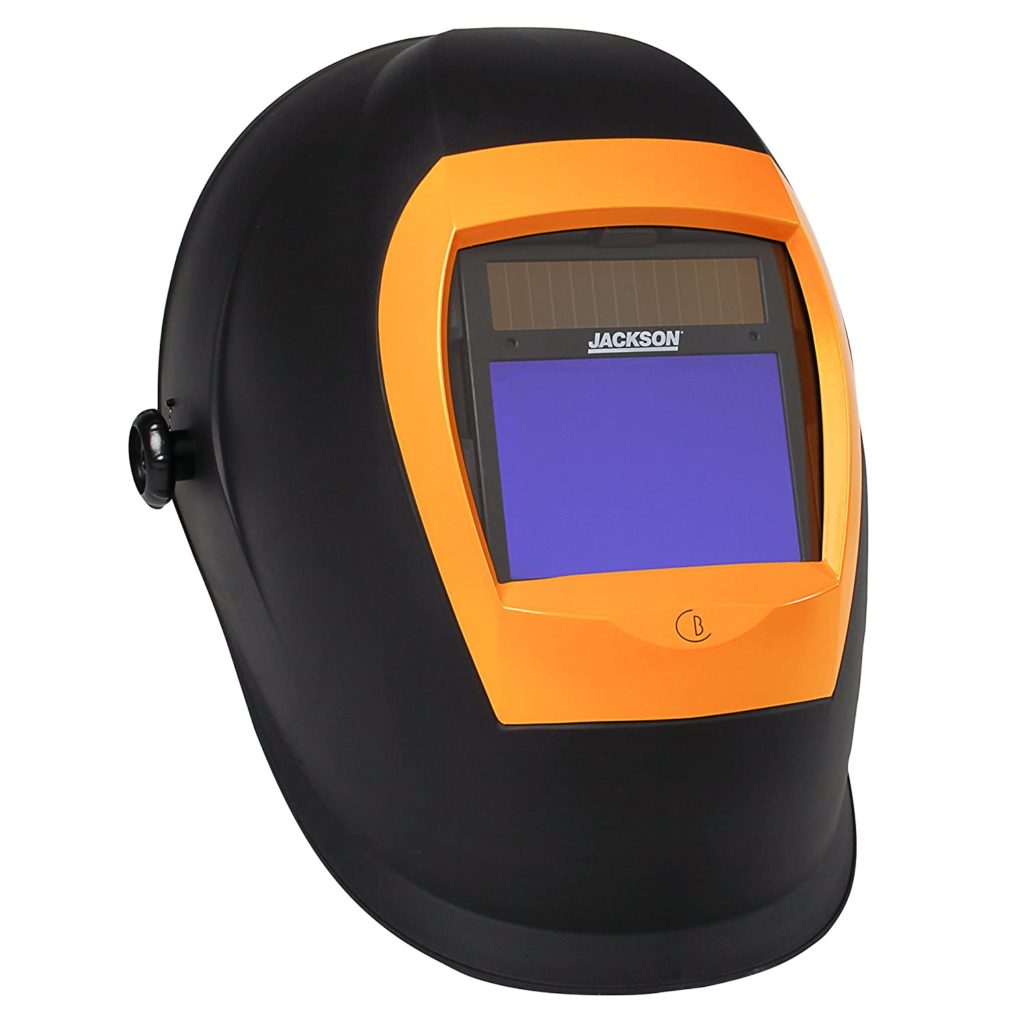Welding is a career that demands a constant focus on safety. Aside from the risk of burns, having an appropriate welding helmet to protect your eyes from the strength of arcs should be your primary consideration.
Lifting and closing your standard helmet as you work can get annoying, and failing to lower it properly can result in issues. Another option to consider is a welding helmet with auto-darkening capabilities.
Maybe you’ve seen these before and wondered how auto-darkening welding helmets work? You might disregard them as a novelty or fads because you don’t understand how they work, but once you do, you’ll see how important they can be.
How Do Auto-Darkening Welding Helmets Work?
There are helmets with auto-darkening filter lenses. When the helmet is turned on, a shade #3 filter is used.
This shade provides the same level of protection as a good pair of sunglasses in harsh sunlight. Several light sensors located near the lens aid in the selection of the correct filter shade.
When you hit an arc, the sensors activate, and the lens filter is replaced.
Components Of An Auto-darkening Welding Helmet
The welding lens of an auto-darkening welding helmet is composed of various elements. Each component must provide complete protection against the infrared/ultraviolet light emitted by the arc. Auto-darkening welding lenses are made up of three parts:
• Interference filter for UV/IR
• A polarization filter
• Liquid Crystals Cell
UV/IR Interference Filter
The UV/IR layer protects the welder from Infrared (IR), and Ultra Violet (UVR) rays whether or not the lens is activated. It is made up of several metallic layers that are encased in a thin layer of glass.
The metallic layers are made up of five layers of silver and six layers of aluminum oxide.
The metallic layers limit IR radiation while also protecting the liquid crystal panel from heat damage.
The UVR filter works in concert with the metallic and polarization filters to protect the welder from UV radiation.
The glass layer also protects against UV radiation. On the other hand, UVA radiation has a more vital penetrative force and can break through the glass.
Metallic layers and polarization filters must be included to provide optimal UVA coverage.

A Polarization Filter
A polarization filter is a filter that reduces the amount of light that enters.
Three polarization filters are included in an auto-darkening helmet. Each following layer contains a filter, starting with the UV/IR interference layer.
All three work together to protect the welder from the intense visible brightness of the arc.
A 90-degree angle filter follows the UV/IR filter. When positioned at 90 degrees, these filters are the darkest; they barely darken slightly when put in the same line as the other layers.
Liquid Crystals Cell
Light is deflected by liquid crystal cells, often known as LC or liquid crystal cells. Like the polarization filter, the LC-cell layers will reflect light depending on their position.
This layer can be electrified to allow for more control over how light enters the lens and how it moves, which is why your welding helmet has an electrical component. You’ll need that electricity or charge to activate the LC-cell layers.
Light and Arc Sensors
Light and arc sensors are two types of sensors.
Light strength is determined using a combination of light sensors and arc sensors, which darkens the lens accordingly. There are various lights and arc sensors in a helmet.
Traditional welding procedures use light sensors to filter out extra light, whereas arc sensors deal with the brilliant lights produced by welding arcs.
Make sure the helmet is turned on before you start welding. During welding, auto-darkening helmets start at shade 3 and can reach shades 8 to 13 depending on the arc’s luminance.
How Fast Do Auto-Darkening Welding Helmet Lenses Work?
Welding helmet lenses with auto-darkening capabilities are only beneficial if they can activate soon enough before being exposed. How fast does auto-darkening welding helmet darken?
The good news is that auto-darkener technology is significantly faster than your hands in a manual flip-down scenario.
However, depending on the welding helmet you choose, the lens reaction time or the period between arc sensing and activation varies substantially. It is, however, measured in tenths of a second.
Most auto-darkening technology operates between 1/25,000 and 1/10,000 of a second, according to manufacturer labeling. At its slowest, that’s less than one millisecond. A millisecond is about the same length of time as a camera flash.
The pace at which the shade changes vary as well, but if the reaction times are less than 200 microseconds, your eye won’t detect the difference.
How Do You Know If Your Lens Is Not Working?
If the sensors and equipment aren’t working correctly, you should see an exceptionally bright flash when you start welding. It’s still safe to use because of the lens’s passive UV/IR filters.
The most straightforward approach to check if your lens’ auto-dark function is working is to go outdoors and look at the sun. To keep you safe, your welding helmet should react swiftly. You’ve got an issue if it doesn’t.
How Does the Auto-Darkening Lens Work?
The auto-darkening effect of the helmet is created by the lens components working together. It all starts with a successful arc strike.
You must ensure that your helmet is switched on. Keep in mind that moving the LC-cell layers into their correct places necessitates the use of energy.
The arc sensors on the helmet detect the flash and activate the polarization filters and LC-cell layers when an arc is struck. To reflect more light, the layers of the LC-cell will twist. When you alter the light sensitivity, you’ll see an immediate difference in the darkening level.
The same arc sensors that detect the arc will notice the lack of light and alter the lens to make it lighter after you stop welding.
If the helmet fails, it has a safety feature that protects you. It occurs as a result of the polarizing filters being aligned by default.
They’re also angled such that even before the helmet is turned on, the lens darkens slightly. This will ensure that your shade is consistent.
In the off state, the polarizing filters work in tandem with the LC-cell filters to reflect light and dramatically darken the lens.
As long as your helmet is on, it would help if you didn’t have to do anything to darken the lens. You can adjust the shade level to suit your needs and preferences. The helmet will determine how much to darken based on your preferences.
How do you test an auto-darkening welding helmet?
Examine the helmet’s features to see if it’s perfect for you. You’ll need to know the various color numbers it gives, as well as the reaction time, weight, and certification status.
After you’ve decided which one best meets your needs, put it to the test in the sun. Put on your helmet as though you were about to weld something.
Keep track of how quickly and dark your welding lens becomes when you stare up at the sun.
Some auto-darkening welding helmets are pleasant to wear, while others irritate the eyes. You won’t know which is the best for you unless you test it.
I propose that you do not skip the sun test while selecting a helmet.
Conclusion
How do auto darkening welding helmets work? It’s a beautiful response as you learn about the many elements of the lens and how they work together to provide appropriate protection from the welding arcs you work with throughout the day.
These helmets will always keep you safe. They reduce the need to flip your mask up and down regularly. Even if you aren’t welding right now, they can keep you safe while you walk around your shop and pass other welders or when you go outside into the sun.
Recommended Articles:


